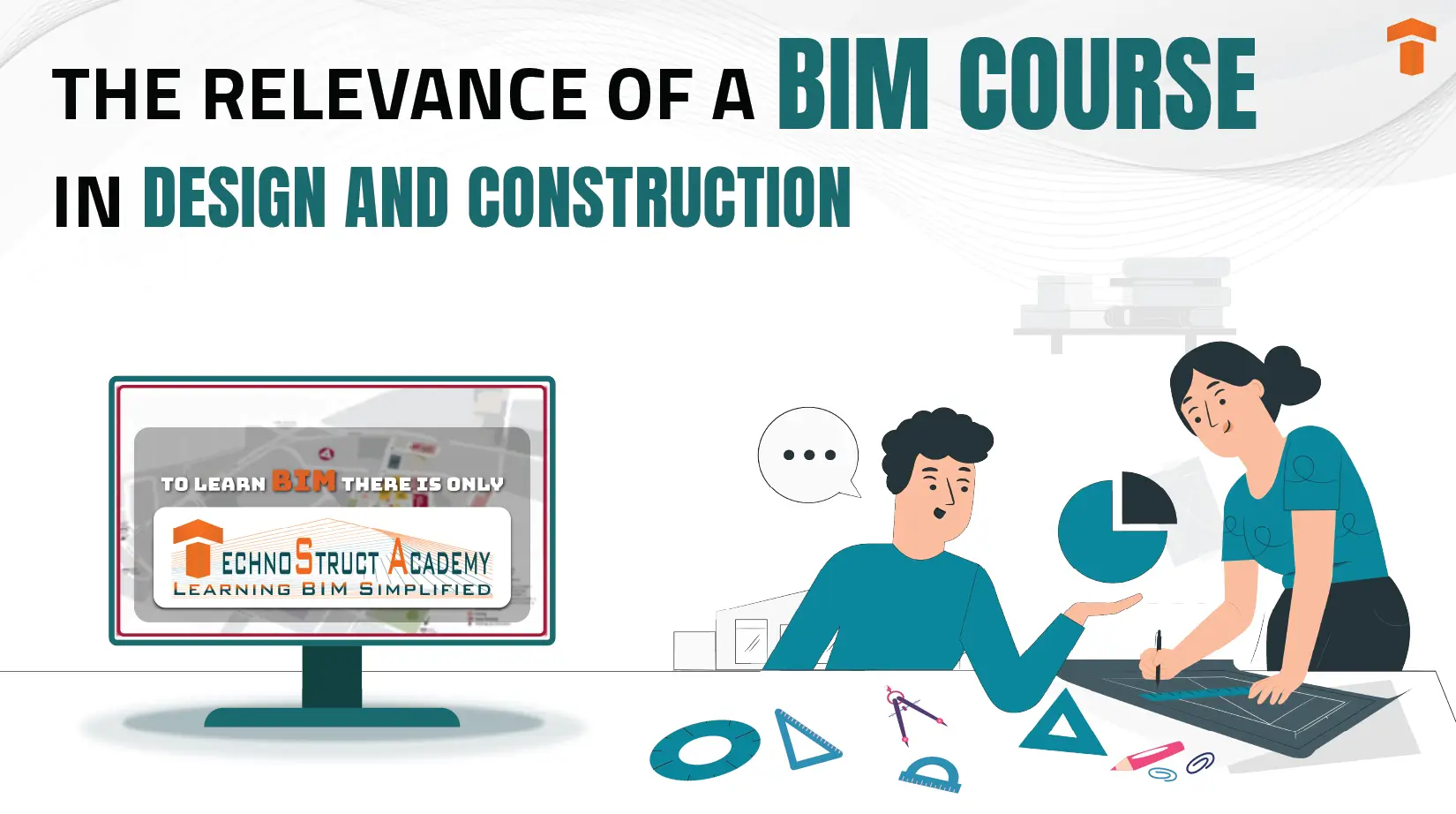The Relevance of a BIM Course in Design and Construction
Apr 12, 2024
Category: Uncategorized
Admin

BIM, or Building Information Modeling, goes beyond the architectural design to represent construction and design innovation. It is a marvel of technology, combining architecture, engineering, and construction into a digital intelligence tapestry. BIM is a complex symphony of data, geometry, and functionality that aligns architects, engineers, and stakeholders. It makes static designs dynamic by incorporating cooperation, collaboration, and foresight. BIM lines, curves, and details describe a tale of careful planning, well-informed decision-making, and relentless pursuit of quality. In a nutshell, BIM is where ideas merge, iterate, and grow in the digital crucible, creating the physical world with unmatched accuracy and clarity.
BIM’s clarity of vision comforts stakeholders. Engineers relentlessly tackle structural integrity problems, while architects meticulously actualize their imaginations. Data-driven knowledge helps contractors navigate construction’s maze with increased efficiency. BIM in Civil Engineering is more than its digital parts—it’s a monument to human creativity and the limitless possibility of collaboration and invention. It gracefully crosses space and time to connect notion and reality. BIM is a cornerstone of the built world, a tribute to development and enlightenment. It shows how technology can change our world. In the vast domain of architectural innovation, BIM reigns supreme—a light of optimism, creativity, and a better future.
The Relation Between BIM and Civil Engineering
In the delicate realm of construction and innovation, Building Information Modeling (BIM) and civil engineering build a symphony of partnership that denotes progress and greatness. Like two celestial planets circling in perfect harmony, BIM and civil engineering intersect to create a future where infrastructure showcases human genius. Civil engineering is about changing the earth’s contours to achieve civilizations’ aspirations. It symbolizes order in chaos and the quest for structural integrity and social development. Civil engineering connects worlds with steel and concrete, from skyscrapers to bridges across chasms.
BIM shines through this construction tapestry, empowering design, analysis, and execution. Digital intelligence transforms civil engineers’ ideas into reality. BIM is the foundation of civil engineering, fostering innovation and creativity via its unlimited data gathering, analysis, and visualization. This foundation is taught during a BIM course. Civil engineers make use of BIM’s clarity to navigate design and analysis’s maze with efficiency and accuracy. BIM guides engineers to overcome uncertainty from conception to construction with steadfast determination. BIM’s ability to model and iterate allows civil engineers to explore the infinite possibilities and drive innovation with each digital pen stroke.
BIM and civil engineering are the revolutionary potential of cooperation and synergy
BIM and civil engineering are more than just useful; they demonstrate the revolutionary potential of cooperation and synergy. BIM and civil engineering get along in unison like two beloved souls in the moonlight. They give static designs life via teamwork and insight. BIM’s transformational potential in infrastructure changes civil engineering in its entirety. BIM is a digital paradise where engineers persevere to shape the future by optimizing procedures and improving communication.
BIM represents the spirit of cooperation and creativity beyond its digital aspects
BIM’s transparency allows civil engineers to escape conventional design and explore infinite possibilities. BIM’s simulation and analysis capabilities help engineers understand structural integrity and navigate uncertainty with grace. BIM represents the spirit of cooperation and creativity beyond its digital aspects. BIM is a beacon of hope in civil engineering, demonstrating human ingenuity’s ability to change the world one digital brick at a time. In a nutshell, BIM and civil engineering collaborate and innovate beyond convention. They handle uncertainty and shape human development with unyielding conviction. Civil engineers find refuge in BIM’s clarity, transcending convention to explore the infinite possibilities. Their digital pen strokes shape the future with elegance and aplomb.
The Relevance of a BIM Course in Contemporary Design and Construction
BIM courses are a symbol of innovation and advancement in contemporary design and construction. The rich corridors of BIM education are like a colorful realm of knowledge, where each thread is skillfully weaved and adds to the vast mosaic of architectural perfection. Aspiring architects, engineers, and construction professionals come together for a BIM course to learn and benefit from technology innovation. BIM education encourages students to explore digital design, where creativity blossoms into actual buildings that influence the skyline and reinvent architecture.
BIM in Civil engineering represents a paradigm change in architectural practice. In an age when accuracy and efficiency are essential, BIM courses are the sacred chalice that grants mastery. Students learn the crucial covenant of BIM, where lines and polygons play a harmonic role of form and function, via a symphony of digital tools and methods. BIM courses are relevant outside academics and connect with the architectural zeitgeist. The instruments of creativity must develop with the world, creating a new paradigm where tradition and innovation dance in a captivating ballet. Aspirants navigate modernity’s labyrinthine passageways, where tradition and innovation meet to create tomorrow’s architectural wonders, with BIM courses.
BIM courses embrace change and chart a route to a better, more sustainable future
The lush fields of BIM education include students in the epic story of architectural growth. They may overcome traditional design methods and explore digital space. BIM courses are relevant throughout the construction ecosystem, bringing efficiency and sustainability into architectural practice. Students learn to manage the complicated stakeholder nexus and form symbiotic partnerships that transcend conventional silos via BIM education just by paying affordable BIM Course Fees. BIM courses are relevant because they empower a generation of architects and engineers to embrace change and chart a route to a better, more sustainable future. BIM courses nurture invention and help future architects create a world of limitless imagination, like the giant oak that grows in healthy soil.
Concluding Remarks
Imagine a world where architectural genius blends effortlessly with technical wizardry, innovation, precision, and digital threads of perfection to weave the fabric of a building. BIM offers a unique chance to those who want to shape the future skyline with their intelligence and innovation. A BIM course is more than just a method to learn skills—it opens doors to endless possibilities. BIM promises to change architecture in a society eager for sustainable solutions and efficient building techniques. BIM competency makes an architect a change agent, a progress accelerator, and a guardian of the environment.








